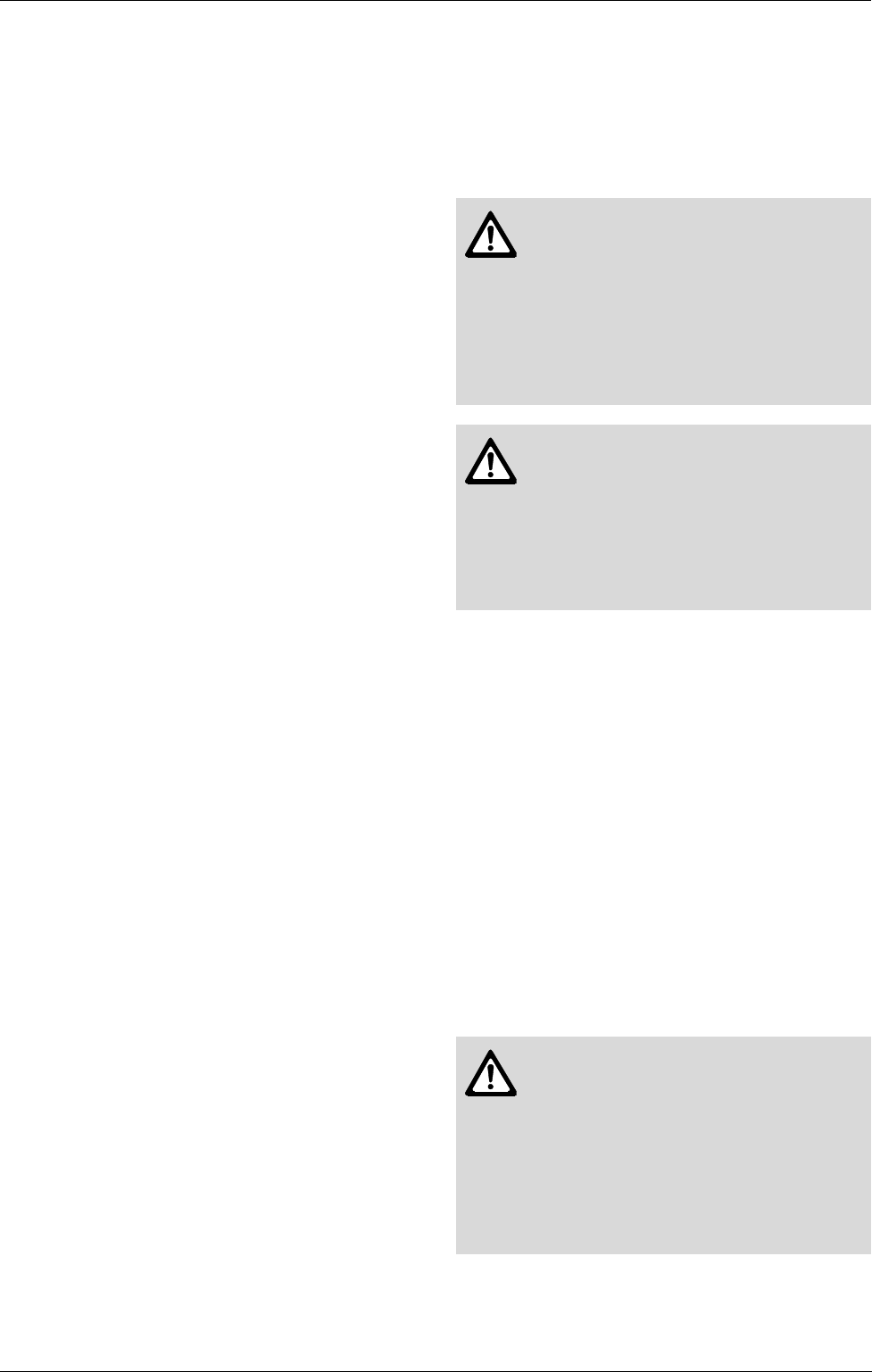
6 720 608 782
16
Installation instructions
below for providing adequate combustion air for the
water heater as well as any other appliances that may
consume air in the space. Always follow local codes if
they are more stringent.
This Installation Manual specifies the minimum exhaust
vent length (Fig. 8, page 9) and the amount of
combustion air required for this unit. When all
requirements are followed, the unit will operate properly
and safely. However, there may still be a risk of freezing
due to negative draft if the other combustion appliances
in the building are not supplied with sufficient
combustion air. A wood stove or furnace can pull its
combustion air from the heater's vent pipe, allowing the
cold incoming air to freeze the cold water in the heat
exchanger. Supplying more combustion air for all
combustion appliances is the solution. A HVAC
specialist should be consulted to design solutions for
providing more combustion air. Observe the following
guidelines:
Installations in structures that have been tightly
constructed (air infiltration rate of 0.40 ACH or less)
must be provided with combustion air per the National
Fuel Gas Code. Consult a HVAC specialist if your air
infiltration rate is questionable.
The space must have two permanent openings, one
commencing within 12 inches of the top and one
commencing within 12 inches of the bottom of the
enclosure.
Each opening must have a minimum free area of one
square inch per:
• 1000 Btu/hr if all air is taken from inside the building
• 2000 Btu/hr if all air is taken from the outside by
horizontal ducts
• 4000 Btu/hr if all air is taken from the outside by
direct openings or vertical ducts.
Or the space must be provided with one permanent
opening or duct that is within 12 inches of the ceiling of
the enclosure.
This opening must have a minimum free area of one
square inch per:
• 3000 Btu/hr if all air is taken from the outside by a
direct opening or vertical duct.
Louvers, grills and screens have a blocking effect. If the
effective free area is not known, increase the sizes of
your openings by 300% if your louvers are wood and by
43% if your louvers are metal. Refer to the National Fuel
Gas Code for complete information.
3.5 Proper location for installing your
heater
Carefully select the location of the water heater. For
your safety and for proper heater operation, you must
provide combustion air to the heater and a proper
exhaust vent system.
Follow the guidelines below:
B 1. Locate the heater where venting, gas and
plumbing connections are feasible and convenient.
B 2. The hot water lines should be kept short and
insulated to save energy. Centrally locating the water
heater is recommended to keep hot water
distribution times even throughout the structure.
3.6 Heater placement and clearances
The GWH 2400 ES is approved for installation on
a combustible wall (see chapter 3.7 Mounting
installation) provided the floor covering below
the heater is noncombustible. For installations in an
alcove or closet, maintain the minimum clearances to
combustible and non-combustible materials listed
below. See also Fig. 7 and Table 1 on page 7.
Clearances from any exhaust vent pipe are dependent
upon the clearance requirements of the stainless steel
vent pipe manufacturer. Single wall stainless steel
(AL29-4C) vent pipe (vent type rated for Category III
appliances) must be used when exhaust venting this
appliance. See chapter 3.3 (page 8) Venting.
3.7 Mounting installation
Warning: The water in this water
heater is cold and always remains cold
except for the times the burner is on. In
the event of power outage in
conjunction with freezing temperatures,
it is recommended that the heater be
drained.
See chapter 6.2, page 27 “Winterizing”
for draining instructions.
Warning: Flammable materials,
gasoline, pressurized containers, or any
other items or articles that are potential
fire hazards must NOT be placed on or
adjacent to the heater. The appliance
area must be kept free of all
combustible materials, gasoline and
other flammable vapors and liquids.
Warning: before starting
installation
B Check that there are no loose or
damaged parts inside the
appliance
B Confirm the gas type of the heater
matches the gas supply you will be
connecting the heater, see Fig. 2,
page 5.


















